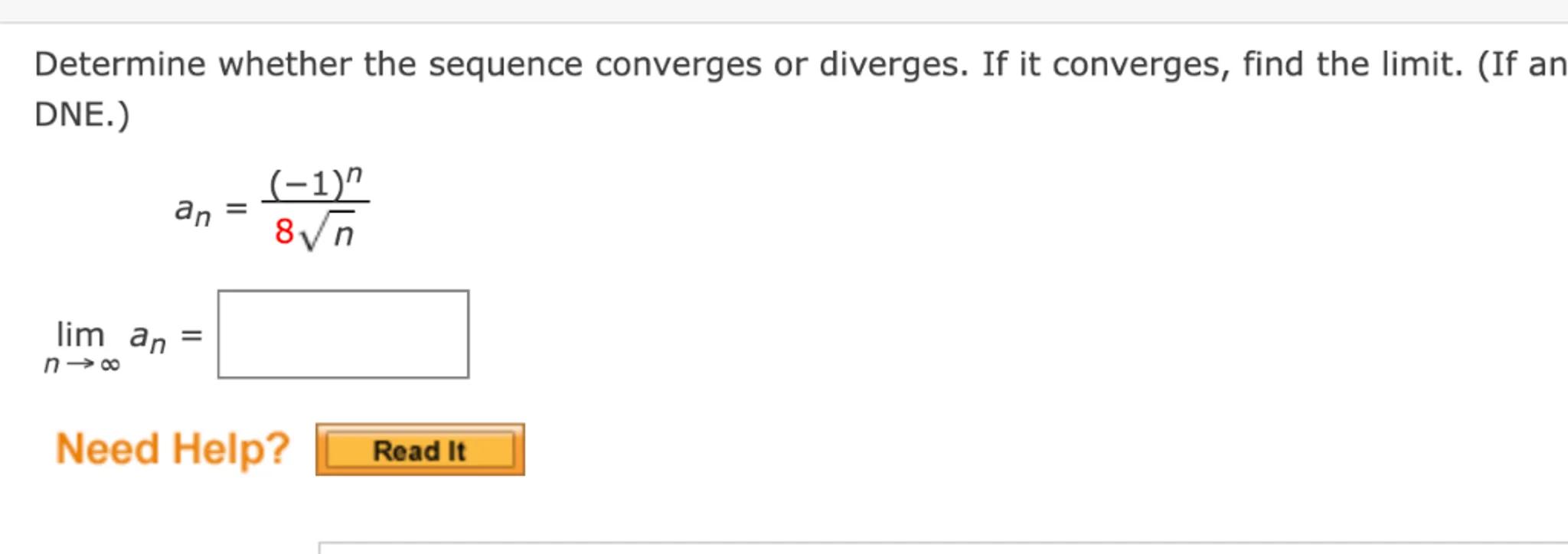
Sia
Determine whether the sequence converges or diverges. If it converges, find the limit. (If an DNE.)
Need Help?
Read It

Answer from Sia
Posted over 1 year ago
Solution by Steps
step 1
We start by considering the given sequence:
step 2
To determine if the sequence converges, we need to find the limit as approaches infinity:
step 3
Observe that oscillates between -1 and 1, but grows without bound as approaches infinity
step 4
Therefore, the numerator is bounded, while the denominator increases indefinitely
step 5
As approaches infinity, the fraction approaches 0 because the denominator grows much faster than the numerator
step 6
Thus,
Answer
The sequence converges to 0.
Key Concept
Convergence of a sequence
Explanation
A sequence converges if its terms approach a specific value as approaches infinity. In this case, the sequence converges to 0 because the denominator grows without bound while the numerator remains bounded.
Not the question you are looking for? Ask here!
Enter question by text
Enter question by image
Unlock Smarter Learning with AskSia Super!
Join Super, our all-in-one AI solution that can greatly improve your learning efficiency.
30% higher accuracy than GPT-4o
Entire learning journey support
The most student-friendly features
Study Other Question